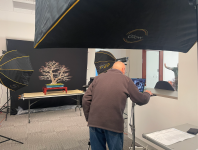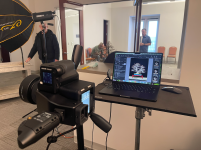I was just thinking arakawa is great because it hides scars well. I'm dumping most of my Telperion Japanese maples, just don't feel for JM like I do for other species. Then there's the scars on my field-grown trunks. Hard to get behind a tree which will always have flaws. Someone talk me out of it if scars mute after a few decades
You are using an out of date browser. It may not display this or other websites correctly.
You should upgrade or use an alternative browser.
You should upgrade or use an alternative browser.
Arakawa Japanese Maple
- Thread starter MACH5
- Start date
River's Edge
Imperial Masterpiece
The beauty of some maple species are the ability to rework scars and with patience get amazing results. The difficulty with maples is the pressure placed upon the grower to create a trunk without major blemishes. The cure lies within the balance of patience and persistence with improved technique. It helps to study the progression of known trees illustrated in careful fashion. I found the examples in Merrigiollis book encouraging. Particularly if one is working with larger stock that has a good deal of correction involved in order to obtain the " most " for that particular tree.I was just thinking arakawa is great because it hides scars well. I'm dumping most of my Telperion Japanese maples, just don't feel for JM like I do for other species. Then there's the scars on my field-grown trunks. Hard to get behind a tree which will always have flaws. Someone talk me out of it if scars mute after a few decades
I suspect the truth might be that the best examples are not the result of field growing techniques, but actually the much more careful and patient methods employed by container growth over longer periods of time. I share your observation that field grown maples can be very demanding of our time, expertise and patience. This is an observation that repeats itself whenever I return from major shows of spectacular examples of Bonsai.
Short answer is that you can make incredible progress reworking scars on maples with patience and improved techniques. Longer answer involves tremendous respect for the growers that can produce incredible trunks with smooth appearance from the get go! Often we need to decide which aspects we have the true passion and patience for and which ones we may wish to set aside or limit the number we tackle. I vote for limiting the number one works with but retaining the diversity of challenge of working with a wider diversity of species. I picked up an Arakawa trident to work with this summer.
PS: Sorry I missed the opportunity to purchase pots in Oakland, Visiting Houston to support my wife's participation in the Houston International Quilt Festival!
badatusernames
Omono
Sure! I suggest to not do any leaf cutting or pinching in the apical regions. Let those areas extend in the spring. Post hardening, then cut back as necessary.
Thanks Bri! Hoping for a good showing.
Thanks!
MACH5
Imperial Masterpiece
Thanks!
NP! Also I want to add not to do any leaf cutting or at least keep it to a minimum even post hardening on the apex. It is a bit alarming to see so many arakawa maples with dead tops including a really nice one I am working on now for a client.
Moridin
Shohin
Such a beautiful tree sir
SouthernMaple
Chumono
i can't wait to see it and you in person next monthThe arakawa today a little past peak color. Some wire and guy wires are still on a few branches that will be removed before it goes on display at Kannapolis this December. Mossing will need to be done as well as some fine tune pruning. I also had a larger custom table made (not pictured) which should compliment the tree nicely.
View attachment 572869
View attachment 572870
Last edited:
SouthernMaple
Chumono
This is why I always have a front and a back. When the front has too many scars or they are healing up, I switch fronts.I was just thinking arakawa is great because it hides scars well. I'm dumping most of my Telperion Japanese maples, just don't feel for JM like I do for other species. Then there's the scars on my field-grown trunks. Hard to get behind a tree which will always have flaws. Someone talk me out of it if scars mute after a few decades
MACH5
Imperial Masterpiece
Arakawa just back from being shown at the Winter Silhouette in Kannapolis, NC. The below pic is the professionally photographed tree by the great Joe Noga who I had the pleasure of seeing again after so many years.
The tree is 30" high from its base. Pot by Nao Tokutake and stand by Alex Imbo.

A few behind the scenes pics with Joe Noga doing his thing.



A few pics of the tree at the venue.




The tree is 30" high from its base. Pot by Nao Tokutake and stand by Alex Imbo.

A few behind the scenes pics with Joe Noga doing his thing.



A few pics of the tree at the venue.




clem
Omono
A masterpiece of beauty and elegance 


Brian Van Fleet
Pretty Fly for a Bonsai Guy
Perfection.
River's Edge
Imperial Masterpiece
Love the moss work, lots of contrast for a very natural blend of pot and tree . outstanding!Arakawa just back from being shown at the Winter Silhouette in Kannapolis, NC. The below pic is the professionally photographed tree by the great Joe Noga who I had the pleasure of seeing again after so many years.
The tree is 30" high from its base. Pot by Nao Tokutake and stand by Alex Imbo.
View attachment 577674
A few behind the scenes pics with Joe Noga doing his thing.
View attachment 577676
View attachment 577677
View attachment 577678
A few pics of the tree at the venue.
View attachment 577680
View attachment 577681
View attachment 577682
View attachment 577679
dirk hoorelbeke
Omono
wow
namnhi
Masterpiece
How much? @MACH5Arakawa just back from being shown at the Winter Silhouette in Kannapolis, NC. The below pic is the professionally photographed tree by the great Joe Noga who I had the pleasure of seeing again after so many years.
The tree is 30" high from its base. Pot by Nao Tokutake and stand by Alex Imbo.
View attachment 577674
A few behind the scenes pics with Joe Noga doing his thing.
View attachment 577676
View attachment 577677
View attachment 577678
A few pics of the tree at the venue.
View attachment 577680
View attachment 577681
View attachment 577682
View attachment 577679
bwaynef
Masterpiece
MACH5
Imperial Masterpiece
JudyB
Queen of the Nuts
Is he asking after the man or the tree?!!! lol.Um... well I suppose every man has his price.
Shogun610
Masterpiece
it’s a beaut clark !
Ruddigger
Omono
Best in show. You were robbed.
Similar threads
- Replies
- 16
- Views
- 2K
- Replies
- 89
- Views
- 8K
- Replies
- 12
- Views
- 2K


